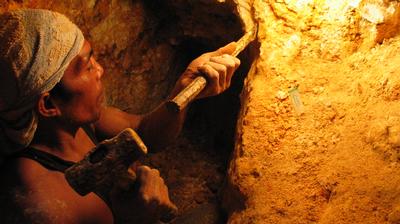Trading in corruption: Evidence and mitigation measures for corruption in the trading of oil and minerals
How to cite this publication:
Olivier Longchamp, Nathalie Perrot (2017). Trading in corruption: Evidence and mitigation measures for corruption in the trading of oil and minerals. Bergen: Chr. Michelsen Institute (U4 Issue 2017:6)
Between 2011 and 2013, sales of government oil from the ten biggest producers in sub-Saharan Africa accounted for 56% of these countries’ total public revenues. Despite their importance, however, such sales have received little political or academic attention until recently. Corruption risks associated with this phase of the commodity value chain are high due to the volumes of the financial transactions, the high degree of interaction with public authorities, the opacity of both the sales themselves and the actors involved, and a lack of regulation. Several case examples show that these risks are not merely theoretical. We summarise the state of research on this subject, paying special attention to buyers, whose responsibilities have been little discussed. We offer a typology of corruption risks in first sale trades of oil and minerals, and analyse existing measures to tackle them.
Series Editor, Aled Williams, on why this U4 Issue matters for donors
Trading in corruption: How effectively responding to corruption in the sale of oil and minerals could help reduce poverty and aid reliance
Terms such as “resource curse challenges”, “political economy problems” and “illicit financial flows” have all become part of the common parlance of anti-corruption work. Policy and academic discussions abound on the factors that determine corruption in resource cursed contexts, and what to do about it. Yet, until recently, there has been hardly any policy or academic discussion of corruption risks associated with producer countries’ sales of so-called “hard commodities” such as oil or minerals. This is despite a recent increase in the significance of commodity production for developing country economies, and the well-known corruption challenges found in the extractive industries. This U4 Issue, based on fresh analysis of Extractive Industry Transparency Initiative (EITI) reports and drawing on a database of 60 corruption cases in the trading of oil and minerals, identifies why commodity trading comes with a high risk of corruption:
- Selling oil and minerals involves huge financial values
The huge financial values raise the stakes involved in particular trading outcomes. Oil sales by the governments of the 10 largest producers in sub-Saharan Africa equaled 56% of their combined revenues between 2011 and 2013. To put this in perspective, the value of national oil company sales in Angola is around seven times as large as the country’s health budget.
- Sales of oil and minerals, and the actors involved in such sales, are largely opaque
An assessment of state owned enterprises active in oil and mineral trading has found that 18 of 45 are under no legal obligation to report on their operations. It is generally impossible to know, even in an aggregate way, to whom commodities are sold and at what price, although some state owned enterprises do, from time to time, publish detailed figures on their trading activities.
- Trading in commodities is not specifically regulated in any of the home states of companies active in trading oil and minerals
While this does not place firms above the law, a lack of specific regulations implies that there are few legal requirements on the way commodities are traded, on the conditions under which companies carry out such trading, and on the type of organisation required to minimise corruption risk.
Unfortunately, corruption in the trading of oil and minerals is not merely a theoretical risk, as case examples in the U4 Issue show. Although not the most recent example studied, the Oil for Food scandal is perhaps the most notorious. Between 1996 and 2003, companies paid bribes to Saddam Hussein’s regime to obtain deliveries of crude oil, whose allocation was supervised by the United Nations. By paying a commission amounting to a few cents per barrel to the Baathist regime, these traders bought oil at a price slightly higher than that established by the UN, but always lower than the market price. An independent inquiry into the scandal found that 139 of 248 companies that participated in the Oil for Food programme paid bribes to Iraq, totaling USD 229 million.
In contrast to the early focus of anti-corruption initiatives on down- and mid-stream extractive industry activities, there are signs that some policymakers in both producing and buying states are beginning to take corruption in commodity trading more seriously. In 2016 the OECD identified for the first time specific measures to mitigate corruption during commodity sales, while an Anti-Corruption Summit in London led to statements from eleven participating countries (including producers Nigeria and Ghana and trading hubs Switzerland and the UK) highlighting the need to enhance information disclosure by companies to governments on sales of oil, gas and minerals. Given estimates that some 70% of people living in extreme poverty are in commodity-rich developing countries, initiatives that help reduce corruption not only in granting contracts or licenses related to extractive operations, but also in oil and mineral sales, could have significant impacts in reducing poverty and potentially decrease reliance on aid. The U4 Issue highlights why the time has come for specific measures in this direction, including on the part of countries with dual roles as commodity trading hubs and bilateral aid donors to oil and mineral producing developing countries.







